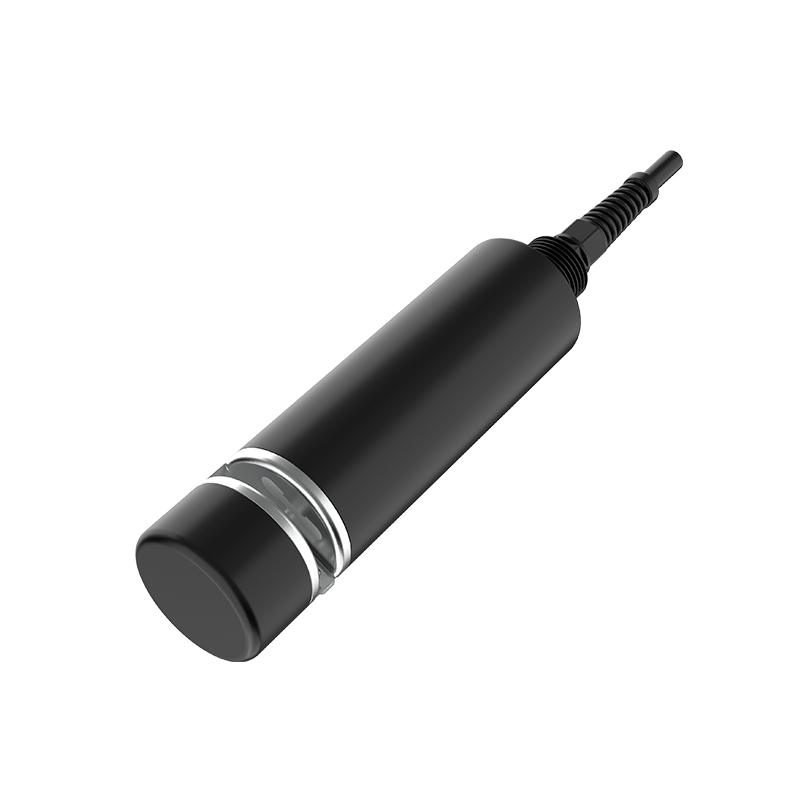Meteorological environment monitoring equipment supplier
Insist on doing high-precision customer favorite technology products

1. Definition of suspended solids in water of self-cleaning water quality suspended solids sensor
Suspended matter in water refers to solid matter suspended in water, including inorganic matter, organic matter, mud, sand, clay, microorganisms, etc. that are insoluble in water. The content of suspended solids in water (sludge turbidity) is one of the indicators to measure the degree of water pollution. Suspended solids in water are the main cause of water turbidity.
2. Product features of self-cleaning water quality suspended solids sensor
1. This product is a device for measuring the concentration of suspended solids in solutions (sludge turbidity). It uses optical measurement methods and does not require chemical reagents;
2. Built-in temperature transmitter with automatic temperature compensation function;
3. Use modulated light signals to reduce visible light interference;
4. Widely used in water treatment, aquaculture, environmental monitoring and other industries;
3. Technical parameters of self-cleaning water quality suspended solids sensor
Measurement elements: suspended solids concentration, temperature value.
Electrode size: length 247mm, outer diameter 50mm.
Electrical interface: The thread is NPT3/4 thread (6-point pipe thread, DN20), which is convenient for pipeline installation and sinking installation.
Protection level: IP68;
Electrode life: The electrode life cycle is about 1 year.
Electrode maintenance: The device itself generally does not require routine maintenance.
Electrode calibration: There is a gap between the actual measured value of the suspended solids concentration (sludge concentration) of the on-site water sample and the calibration value of the equipment calibrated with the standard solution at the factory, and the size of the gap depends on the homogeneity of the suspended solids/sludge of the two solutions. However, in the actual site, suspended matter with different components has different light absorption capabilities, and there is a certain linear relationship. Therefore, if on-site personnel want to measure accurate values, they must perform on-site calibration and change the measurement slope of the equipment. (The equipment is calibrated with a kaolin mixed solution before leaving the factory. It has good consistency and stability and supports 485 command calibration)
Working temperature: 0~40℃.
Electrode withstand voltage: <0.1MPa
Response time: ≤30sec
Shell material: corrosion-resistant plastic, stainless steel
Flow speed requirement: <3m/s
Power supply range: 12-30VDC.
Cable length: default 5m (10m, 15m, 20m can be customized).
Power consumption of the whole machine: 1.2W (normal); 4.5w (when the self-cleaning system is working)
Communication interface: RS485
Measuring range: 0~20000mg/l and below ranges are available
Measurement error: ±5%FS (depends on sludge homogeneity)
Resolution: 0.1mg/L
Sewage discharge standards: Suspended solids belong to the second category of pollutants. The "National Standard of the People's Republic of China Comprehensive Wastewater Discharge Standard GB 8978-1996" stipulates that sewage discharge is divided into three levels of discharge standards based on the different destinations of sewage discharge.
The national standard stipulates that according to the nature of the enterprise's production (for details, please refer to the national standard), for units built before 1998: the first-level emission standard is 20~100mg/l, the second-level emission standard is 30-800mg/l, and the third-level emission standard is <400mg/l.
For construction units after 1998: the first-level emission standard is 20~70mg/l, the second-level emission standard is 30~800mg/l, and the third-level emission standard is <400mg/l.
4. Precautions for installation of self-cleaning water quality suspended solids sensor
1. The equipment can be placed in any direction in the water. The best placement direction is horizontal, which can reduce the impact of debris and foreign matter deposition in the water on the measurement.
2. When hanging the sensor, avoid the sensor from hitting the wall or other water conservancy facilities due to water flow. If the water flow is strong, secure the sensor.
3. The installation depth of the equipment shall not exceed 2 meters from the water surface.
4. Considering the fluctuation of water level, it is recommended to submerge the equipment below the lowest water level of 30cm.
5. The equipment should be placed in bubble-free waters.
5. Precautions for use of self-cleaning water quality suspended solids sensor
1. The equipment contains sensitive optical components and electronic components. Ensure that the equipment is not subject to severe mechanical impact and avoid direct application of any mechanical stress to the equipment during use.
2. When installing the equipment, try to avoid the cables being too tight or stressed, and avoid the equipment being exposed to sunlight.
3. Do not force the self-cleaning brush shaft to rotate, and regularly check whether the self-cleaning brush is working properly and whether it is damaged.
4. Please do not touch the measurement window with your hands to avoid damage to the measurement window.
5. When measuring and calibrating equipment, avoid bubbles adhering to the surface of the equipment, especially the measurement window. Regularly check the measurement window for attachments and scaling; it can be cleaned with tap water and wiped with a moist soft cloth. For some stubborn dirt, you can Add some household detergent to tap water to clean. Do not scratch the measurement window. If the measurement value is too high, too low, or the value continues to be unstable, please check whether the measurement window of the transmitter is clean. .
6. In principle, the equipment should be calibrated before each use. It is recommended to calibrate it every 3 months for long-term use. The calibration frequency should be adjusted appropriately according to different application conditions (the degree of dirtiness of the application site, the deposition of chemical substances, etc.).